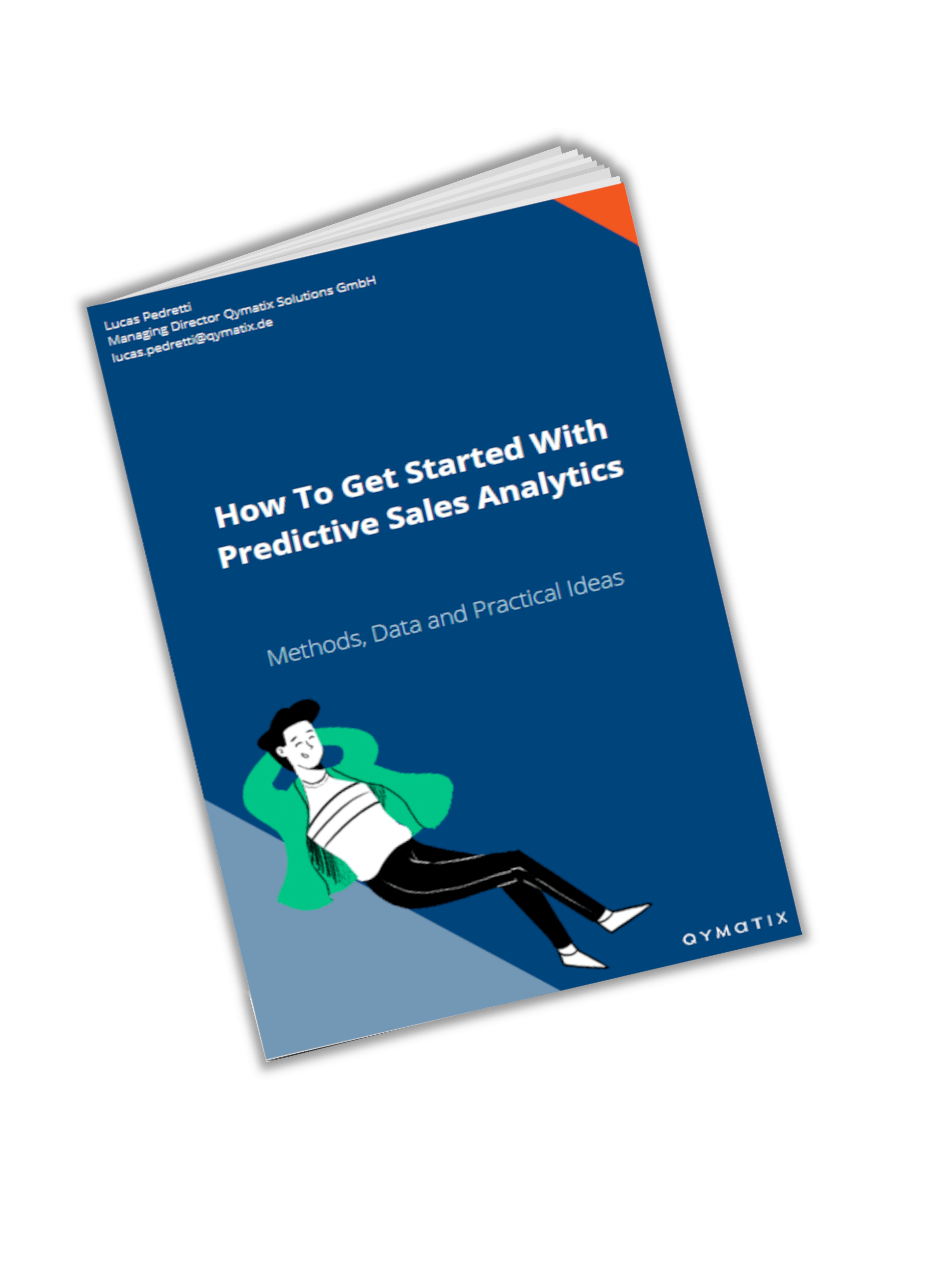How to calculate and increase return on sales with predictive analytics?

Please enter your Email address
How can B2B manufacturing and distribution increase return on sales (ROS) using strategic sales controlling and predictive sales?
Is there a sales and marketing KPI that manufacturing and industrial distribution companies can use to measure the efficiency of their teams? Yes, there is, The Return on Sales or ROS.
Sales executives also define ROS as a net profit rate. It tells a company how much of every dollar it takes in turns into profit.
In short, take operating profit and divided it by revenues – use euros or dollars for both. For example, your company made 3 Mio. Euros on profit last year, with 100 Mio. Euros on net revenues? It thus had a ROS of 3 %.
Investors and managers alike employ the return on sales (ROS) as a KPI to evaluate a company’s overall operational efficiency. It varies widely across industries, geographies and years. Comparing ROS makes only sense for manufacturers and distributors in the same sectors and of roughly the same size.
Let’s review together how to calculate the return on sales and how predictive analytics can help you to increase it.
How do you calculate return on sales?
If you are a company working in distribution, wholesales or manufacturing, you can add the total revenues for a period and deduct your Cost of Revenue and Operating Expenses (Research & Development and Selling General and Administrative expenses). Do not forget to include your buying costs.
If you do not have a better definition for your cost of revenues than the one provided above, use the sum of your purchasing prices and the annual salaries of your salesforce. Companies in manufacturing can follow a similar calculation, using manufacturing costs instead of purchasing prices.
They might arrive at different levels of profitability.
Return on Sales (ROS) = Operating Profit / Net Sales
In short, to calculate your return on sales take your Operating Profit as earnings before income and taxes, or EBIT and divided it by your Net Sales.
The calculation of net sales requires a comment apart. You might have already notice that some companies report net sales while others report revenue. The net sales are equal to the total absolute income minus the credits or refunds a company pays to customers.
What is a good return on sales? Return on sales industry average
The public often quotes Oprah saying:
“You don’t have to do what everyone else is doing.”.
Well, in business, Oprah would be wrong: you do need to do the same or better.
It turns out that if you want to keep your company competing, you at least need a similar Return on sales as your competitors—the reasons why are almost self-evident.
For example, the thin margins of retail stores have pushed the ROS as low as a couple of per cent points on average (2 to 4 per cent) for the past years. On the other extreme, manufacturers (USA) have an average return on sales of around 8 per cent.
During the fiscal year ending on September 2019, Apple Inc. (AAPL) had a ROS of around 24 per cent. The Würth Group, leading German industrial distributor of supply chain solutions for fasteners, safety equipment, and MRO, had a return on sales of around 5 per cent for the year 2019.
Having a higher ROS than your competitors means not only that your company is selling more efficiently, it also builds on your strengths, for your company can invest extra resources on marketing and research.
Return on sales by selected industries
| Building Construction General Contractors And Operative Builders (2018, USA) | 6.9 % |
| Construction (2019, Germany) | 8.0 % |
| Industrial And Commercial Machinery And Computer Equipment (2018, USA) | 5.1 % |
| R&D-intensive manufacturing (2019, Germany) | 5.9 % |
| Other manufacturing industry (2019, Germany) | 5.3 % |
| Knowledge-intensive services (2019, Germany) | 11.6 % |
| Electronic And Other Electrical Equipment And Components, Except Computer Equipment (2018, USA) | 3.1 % |
| Wholesale Trade-durable Goods (2018, USA) | 3.0 % |
How do you increase return on sales with predictive analytics?
There are two, non-exclusive logical ways to increase return on sales: selling more with the same total cost or selling with higher profits.
How do you sell with higher profits? At this point you need to review your calculation of operating profit. To do so, companies in wholesales and distribution can deduct from the net revenue the sum of all purchasing costs in a year, add the annual salaries of the workforce, warehouse rent and other related administrative costs.
Manufacturers can follow a similar principle, using manufacturing costs instead of wholesales purchasing prices.
The first measure you can take to increase ROS is to negotiate better purchasing and selling prices: buy cheaper and sell higher. No rocket science here.
Implementing and operationalising a buy cheaper – sell more expensive pricing strategy is only possible with a pricing analytics software.
The second measure becomes clearer if you rearrange the formula for calculating return on sales (ROS):
ROS = (Net Sales – Operating Costs) / Net Sales
ROS = 1 – (Operating Costs / Net Sales)
So, it is quite clear that an increase in net sales at constant costs will increase your return on sales. Selling more could be translated as increasing cross- and up-selling, finding new customers, and reducing customer churn. For all three problems, there is a predictive analytics solution.
In short, to increase operating profit, successful companies implement advanced pricing analytics, reduce customer churn, and increase cross-selling.
CALCULATE NOW THE ROI OF QYMATIX PREDICTIVE SALES SOFTWARE
How to calculate and increase return on sales with predictive analytics? – Summary
While the distribution of trade-durable goods reached a ROS of 3,0 % in the USA in 2018, the median German SME had a ROS of 7,2 % (2019: 7,4 %), and 70 % of 263 distribution companies in Bavaria had a ROS below 6 % in 2018. Are these figures a good return on net sales? alwaWell, asys, it depends.
There are different averages return on sales depending on industrial sector, geography, and company size. In Germany, for example, companies with fewer employees tend to outperform bigger ones, according to the KfW Small Business Panel.
Regardless of whether 3 or 7 per cent good returns on sales are, you can calculate yours by dividing your operating profit by your net sales. In short, take your profit in dollars and split it by your revenues. Compare it with your peers and competitors and increase it.
Companies improve their ROS if they reduce their cost-of-sales while selling more. Now that you know how to calculate your return on sales and what a good one would be, you also read here how to improve it using predictive analytics.
With a predictive sales software, successful sales leaders can sell more for lower costs. They can find cross-selling opportunities, reduce churn, and analyse pricing.
I WANT TO INCREASE MY ROS WITH PREDICTIVE ANALYTICS – CONTACT US NOW
Free eBook for download: How To Get Started With Predictive Sales Analytics – Methods, data and practical ideas
Predictive analytics is the technology that enables a look into the future. What data do you need? How do you get started with predictive analytics? What methods can you use?
Download the free eBook now.
- We will use this data only to contact you for discussing predictive sales KPIs. You can read here our declaration on data protection.

Ready Ratios (2019): Operating margin (Return on sales) – breakdown by industry
Würth Group: Business Year 2019 – Financial Statement.

